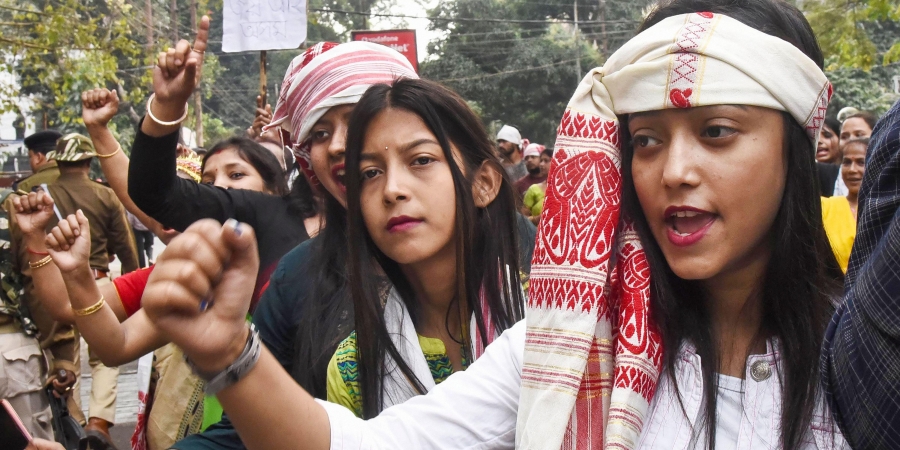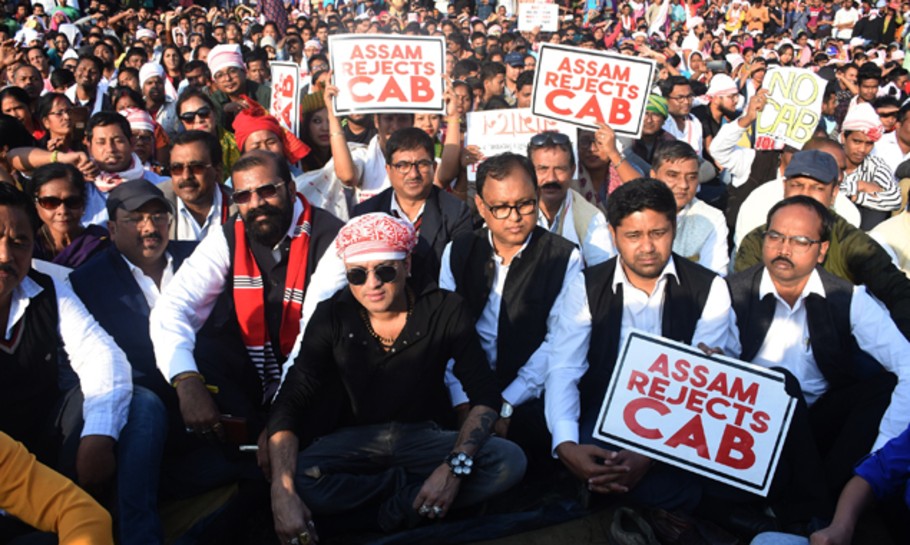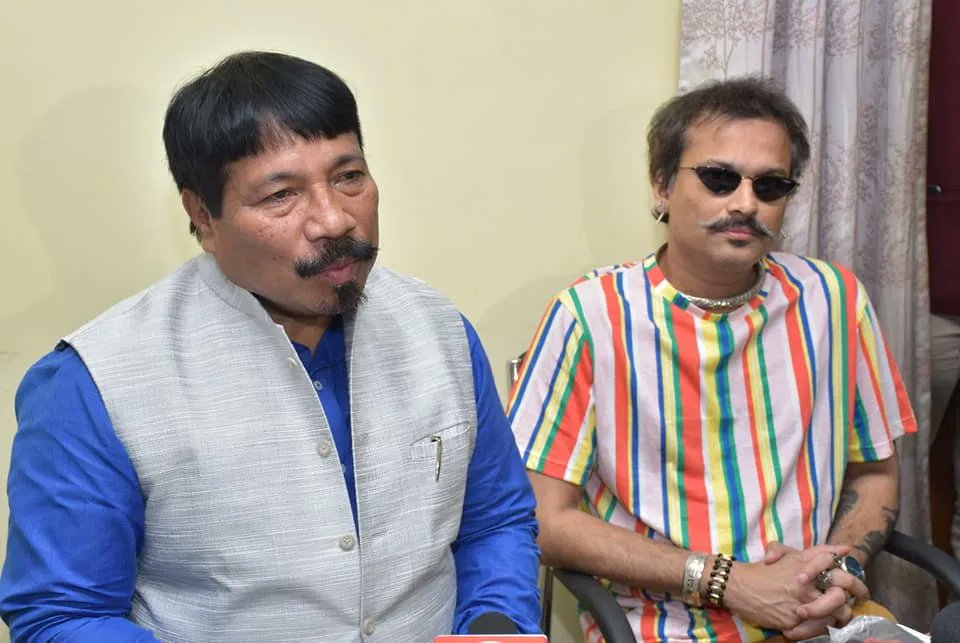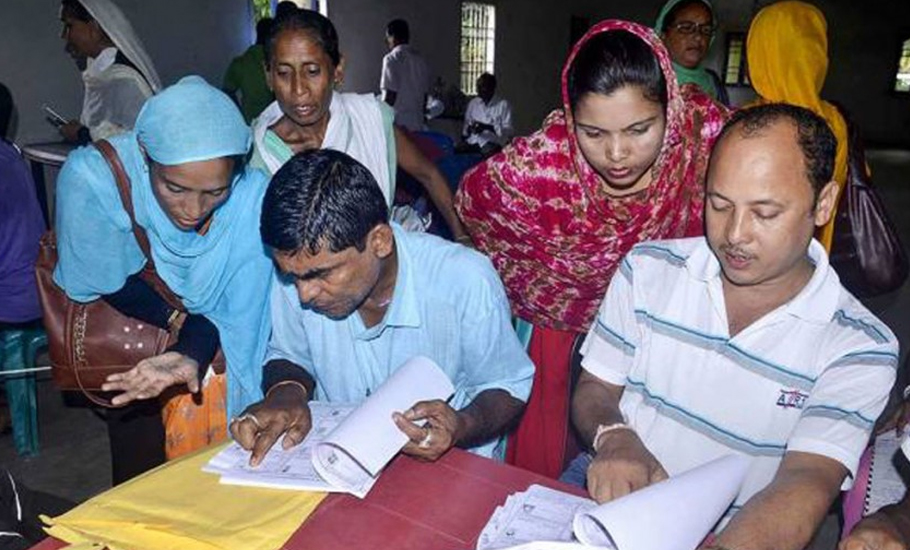
- Home
- India
- World
- Premium
- THE FEDERAL SPECIAL
- Analysis
- States
- Perspective
- Videos
- Sports
- Education
- Entertainment
- Elections
- Features
- Health
- Business
- Series
- In memoriam: Sheikh Mujibur Rahman
- Bishnoi's Men
- NEET TANGLE
- Economy Series
- Earth Day
- Kashmir’s Frozen Turbulence
- India@75
- The legend of Ramjanmabhoomi
- Liberalisation@30
- How to tame a dragon
- Celebrating biodiversity
- Farm Matters
- 50 days of solitude
- Bringing Migrants Home
- Budget 2020
- Jharkhand Votes
- The Federal Investigates
- The Federal Impact
- Vanishing Sand
- Gandhi @ 150
- Andhra Today
- Field report
- Operation Gulmarg
- Pandemic @1 Mn in India
- The Federal Year-End
- The Zero Year
- Science
- Brand studio
- Newsletter
- Elections 2024
- Events
- Home
- IndiaIndia
- World
- Analysis
- StatesStates
- PerspectivePerspective
- VideosVideos
- Sports
- Education
- Entertainment
- ElectionsElections
- Features
- Health
- BusinessBusiness
- Premium
- Loading...
Premium - Events

Who is an Assamese? Panel report raises more questions than answers
In a latest ‘revolt’ to Centre’s ‘betrayal’, the All Assam Students’ Union (AASU) released a confidential report prepared by a government-appointed high-level committee to answer the question ‘who is an Assamese’.

Last December, 37-year-old Junali Bora walked in and out of many anti-CAA (Citizenship Amendment Act) protests that had engulfed Assam and the rest of the Northeast. One such morning, she arrived at Guwahati’s Latasil playground and found herself amid a sea of protesters listening raptly to an almost clean-shaven man, dressed in a black shirt, scruffy trousers, his head covered in a...
Last December, 37-year-old Junali Bora walked in and out of many anti-CAA (Citizenship Amendment Act) protests that had engulfed Assam and the rest of the Northeast. One such morning, she arrived at Guwahati’s Latasil playground and found herself amid a sea of protesters listening raptly to an almost clean-shaven man, dressed in a black shirt, scruffy trousers, his head covered in a red phulam gamosa (the traditional white cloth with floral motifs) and eyes hidden behind a pair of dark shades.
It was none other than her favourite icon and singer Zubeen Garg. Not just for Junali, the 47-year-old singer-actor-filmmaker for long has been the heartthrob of the entire state. With the anti-CAA protests becoming louder in Assam, Garg became the face of the movement. By now, every protest was echoing with his song — Politics Nokoriba Bondhu (Don’t play petty politics, my friend). The song, along with many old and new Assamese songs, became an anthem of sorts during the heady days of December.
A little later in January, Garg said that he would not shave until the CAA was scrapped and was seen growing a beard.
More than six months later, the gamusa is gone from Garg’s head. So is the beard. An ill-shaped moustache is the only remnant of Garg’s ‘leftover’ revolution. The actor just five days back was seen sitting next to a state minister as he was named the brand ambassador of the state agriculture sector.
“A lot of his fans are angry and couldn’t believe their ears? What is he doing with the government? What happened to politics nokoriba bondhu?” Junali wonders.
Still in love with her ‘idol’, she believes “Zubeen is confused”. But there is someone else who seems more confused than Garg — the people of Assam, a state government run by a Hindu nationalist party and a Centre that makes promises only to break.
In a latest ‘revolt’ to Centre’s ‘betrayal’, the All Assam Students’ Union (AASU) on Tuesday released a confidential report prepared by a government-appointed high-level committee to answer the question ‘who is an Assamese’.
Cycle of reassurances and revolts
The panel was set up in July last year by the Union home ministry to look into the implementation of Clause 6 of the Assam Accord. It was the signing of this accord in 1985 that had brought an end to the six-year-long agitation in Assam over fears of unabated influx of illegal immigrants into the state in the aftermath of the Bangladesh War of 1971.
But when the state government kept sitting on the report even though it was submitted way back in February, the AASU (which had three of its top leaders in the committee) released the report.
The 14-member committee, led by Justice (retd) Biplab Kumar Sarma, had submitted the report to Chief Minister Sarbananda Sonowal on February 25 in the presence of his cabinet colleagues.
Sonowal had reportedly handed over the report to Union Home Minister Amit Shah on March 20.
But since then there has been absolute silence from the government’s side.

With the latest showdown, Assam has entered another round of stalemate over resolving the decades-long foreigners’ issue, though the ramifications of the recommendations, if accepted by the Centre, could affect many stakeholders and not just the perceived foreigners.
Apart from other key recommendations, the committee has suggested 1951 as the cut-off date for defining “Assamese People” under Clause 6 of the Assam Accord.
The cut-off of 1951 is not acceptable to many since the Assam NRC exercise that was finalised last year had set 1971 as the cut-off for defining indigenous Assamese people.
If the report is accepted, which seems unlikely, the migrants who came to Assam between 1951 and 1971 would be recognised as Indian citizens but won’t qualify to be “Assamese” and hence won’t be eligible for some rights within the state.
While it recommended that land rights in Assam be restricted only to those defined as “Assamese”, 80%-100% of Assam’s seats in the Assembly, local bodies as well as in Parliament, the panel suggested, should be earmarked for “Assamese people” only.
Assam Accord and the discord
According to the Assam Accord, anyone who entered the country before the midnight of March 24, 1971 is an Indian citizen in Assam. This was done using the 1971 war as the cut-off. Clause 6 of the accord promised “constitutional, legislative and administrative safeguards to protect, preserve and promote the cultural, social, linguistic identity and heritage of the Assamese people”. So far, so good except nowhere in the accord it defined “Assamese people”.
Since then, many attempts have been made to define “Assamese people” but without any conclusive results.
- 80-100% reservation for Assamese people in parliamentary seats from Assam, Assembly seats and local body seats
- 80-100% reservation for Assamese in Group C and D level posts (in Assam) in central govt/semi-central govt/central PSUs/private sector
- 80-100% reservation for Assamese people in jobs under Assam govt and its undertakings; 70-100% vacancies in public-private partnerships
- Land rights, with restrictions imposed on transferring land to persons other than ‘Assamese people’
- Assamese to be official language in Assam, with provisions for use of local languages in Barak Valley, Hill Districts and Bodoland Territorial Area Districts
- Mandatory Assamese language paper for recruitment in state govt services, with alternatives for Barak Valley districts, BTAD and Hills Districts
- To set up academies for all-round development of indigenous tribal languages, including, Bodo, Mishing, Karbi, Dimasa, Koch-Rajbongshi, Rabha, Deuri, Tiwa, Tai and others
So, a constitution of a fresh panel and its report should have ideally settled the question? Even the BJP-led Centre, according to AASU, had promised so. Then what happened?
For the record, the Union government had reconstituted the panel last July after the previous committee members (set up in January) withdrew in protest of the Citizenship Amendment Bill (CAB).
Muddying the waters
While the BJP may have been lucky in imposing various diktats in Assam with a string of successful manoeuvres, the foreigners’ issue in Assam seems far from resolved even a year after the final list of NRC was declared.
“There is precisely one reason behind it. The BJP government first rekindled the hopes of the people of Assam — where NRC updation was a long-pending demand — by promising to flush out all illegal immigrants. Then even before the NRC process was over, it introduced the highly divisive CAB and then to placate the angry voices over CAA, it hurriedly set up the panel and went back to Clause 6,” says Apurba Bhattacharjee, Congress spokesperson and former student leader.
Bhattacharjee is not far off the mark when it comes to how the people of Assam now feel.
“The government wants to grant citizenship to non-Muslim immigrants. This [CAA] is in contradiction to the provisions of the Assam Accord since it would regularise the status of thousands of Hindu Bangladeshis who entered the state after 1971,” says Hasina Ahmed, a student activist from Assam who actively participated in the anti-CAA protests across India, including Shaheen Bagh.
“And a Bangladeshi is a Bangladeshi, doesn’t matter Hindu or Muslim. But when it [BJP] faced widespread resentment over CAB, it formed a panel for Clause 6.”
Others like Junali want to know: “If the BJP was serious about defining ‘who is an Assamese’ and protecting the rights of the indigenous people, why was it hesitant in releasing the report?”
After AASU released the report, its chief advisor Samujjal Bhattacharya said the report was submitted more than five months ago, but the state and central governments have been sitting on it.
“There is no clarity as well on whether the state government has handed it over to the Centre yet. As the government remained quiet on its contents and about its implementation, we decided to make it public so that people in Assam know about it.”
Senior advocate and member of the committee, Nilay Dutta, welcomed the AASU’s move. “The people have a right to know what is in the report.”
Caught unawares, CM Sonowal, on the other hand, said the government is committed to implementing the clause in letter and spirit. “…but disclosing the report is very unfortunate,” he said in a statement.

Heads nod in disagreement
Now that the cat is out of the bag, the fate of the report still seems uncertain since many of the stakeholders find it unacceptable.
While the Congress leaders appeared divided over the 1951 cut-off, the BJP for obvious reasons is miffed with the AASU for releasing the confidential report.
Saying that the AASU should not have made the confidential report public, minister and BJP’s ‘Chanakya’ in the Northeast, Himanta Biswa Sarma, on Wednesday said only the Assam Legislative Assembly has the right to fix the definition of Assamese.
“The definition given by the committee must be passed in the Assam Assembly. The committee can’t decide the definition. There are several areas on which the committee is silent like how do we identify? Do we need another NRC, or will we see the land documents?”
Claiming there is no controversy, he said: “There are so many such issues and to come to a conclusion the committee has given us two years of time. These are complex recommendations. I hope there’s no confusion among the public. It’s just five months and we are already in action.”
According to him, the AASU has only made the matter more complicated by releasing the report.
Earlier in February, when media reports suggested that the panel recommended 1951 as the cut-off, Congress’s Sushmita Dev, who represents the Bengali-dominated Barak Valley, had said when clause 6 will be brought in, there will be no job and security for Bengalis. “The Bengalis’ language will be snatched away,” the former Lok Sabha MP was quoted as saying by the local press.
Likewise, the All Assam Bengali Youth Students’ Federation (AABYSF) fears Bengali Hindus will suffer if “Assamese people” are defined based on the 1951 cut-off.
The All India United Democratic Front (AIUDF) and the All Assam Minority Students’ Union (AAMSU) too censured the recommendations.

According to AIUDF, since the Assam Accord set 1971 as the deadline for being a citizen of Assam, the 1951 cut-off will not stand legal scrutiny.
AIUDF spokesman Aminul Islam had earlier said the 1951 cut-off will only create more divisions in society. “People from all sections, cutting across religion, language and ethnicity, living in Assam had accepted the cut-off date determined by the Assam Accord. What will happen to those who were in the state between 1951 and March 24, 1971?”
BJP creating new outsiders?
But beyond these cries, those observing the developments closely feel it is the BJP which seemed to be most troubled by this report. “The BJP government has no option but to sit on the report. While the Centre earlier promised to implement whatever the committee recommended, it failed to see through this kind of a stalemate,” a BJP leader tells The Federal.
The BJP leader, who doesn’t want to be named, claims to be privy to all important developments within the state unit. He, however, appeared more worried about the division of vote bank.
“If the panel recommendations are accepted, what will happen to non-Assamese Indians? Forget about Bangladeshis, what will happen to Marwaris, Biharis, Bengalis living in the state for so many years but came after 1951?”
His concerns seem to be valid, considering how the state government has buried its neck deep in sand with its recent decision to allow conversion of land without clearances for setting up industries in the state.
The state cabinet last month approved an ordinance that allowed micro, small, and medium enterprises (MSMEs) to set up industries by only submitting a self-declaration.
This sparked immediate fears over rapid conversion of agricultural land for industrial purposes, not to mention those in the tribal belts.
“This ordinance will hurt Assam’s farmers and the rural economy. Very few Assamese have the means to procure land and set up industries. This ordinance will benefit only those from outside,” Congress MLA and the leader of opposition in the Assam Assembly, Debabrata Saikia, had said at the time.
This ordinance, he added, runs contrary to the assurances of protecting the land rights of indigenous people made by the government during the anti-CAA stir last year.
Notwithstanding the new knots added to the tangle over foreigners’ issue in Assam, many in the state now feel the Centre — be it the present BJP or earlier Congress — was never interested in solving the issue. “I have been hearing about ending this problem of illegal immigrants since my college days, now I’m a grandfather and my youngest daughter is in college. The government is making a fool out of us with the same promises,” says Junali’s father.
The illegal immigrants issue, Junali interrupts, is like Zubeen Garg — it will never get old and will always be a vote-catcher.
